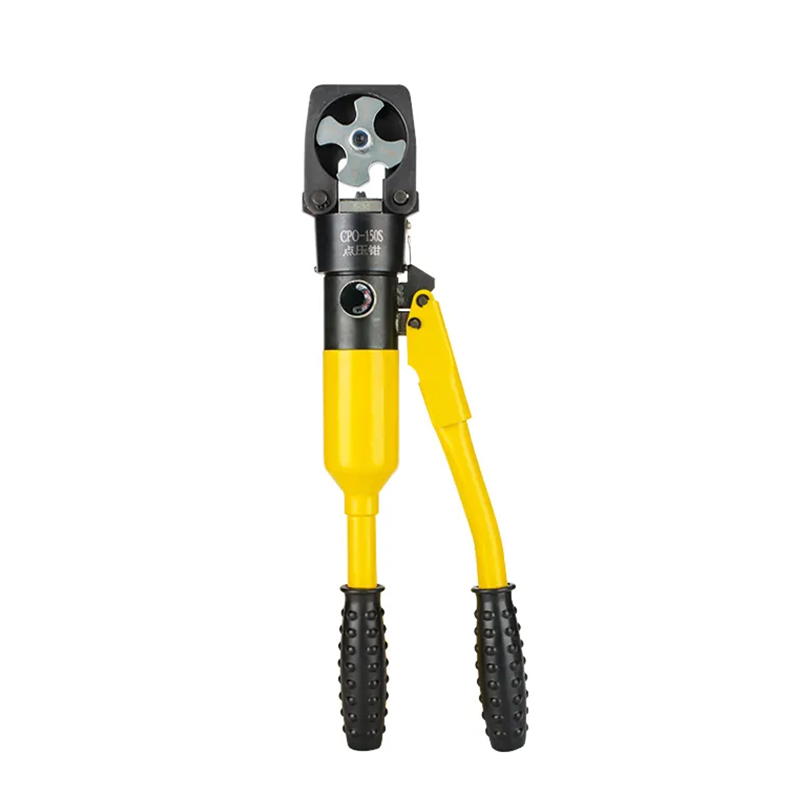



Manual Wire Crimping Pliers are essential tools for electricians, hobbyists, and anyone working with electrical wiring. They provide a reliable way to join wires with connectors, ensuring secure electrical connections. Understanding how these tools work and how to use them effectively can save time, improve safety, and enhance the quality of work.
1. Understanding the Tool
Manual Wire Crimping Pliers are hand-operated tools designed to attach terminals or connectors to wires by compressing the connector around the wire strands. The tool typically has two handles and a crimping head with specifically shaped dies. The dies are designed to match different types and sizes of connectors, ensuring a tight fit. When pressure is applied through the handles, the connector is compressed evenly, creating a secure mechanical and electrical bond.
2. The Crimping Process
Effective use of Manual Wire Crimping Pliers starts with proper wire preparation. The wire should be stripped of insulation to expose the necessary length of conductor. Next, the connector is positioned over the exposed wire, and the pliers are aligned so that the correct die engages the connector. Applying firm and consistent pressure causes the connector to deform around the wire strands. This deformation locks the wire in place, preventing it from slipping and ensuring a reliable electrical connection.
3. Choosing the Right Die
One key to effective crimping is selecting the correct die for the connector type. Many Manual Wire Crimping Pliers feature multiple die sizes to accommodate different wire gauges and connector shapes. Using the wrong die can result in loose connections, wire damage, or incomplete crimps. A proper match ensures that the connector holds firmly without deforming the wire excessively, which could compromise conductivity or safety.
4. Inspecting the Crimp
After crimping, inspection is crucial. The connector should appear evenly compressed with no gaps, and the wire should be securely held. A visual check is often sufficient for small jobs, but for critical applications, a pull test can confirm that the wire does not slip from the connector. Regular inspection helps maintain quality and prevents potential electrical failures caused by poor connections.
5. Maintenance and Care
Manual Wire Crimping Pliers are durable, but proper maintenance ensures they continue to work effectively. Keeping the tool clean, occasionally lubricating the pivot points, and checking for wear on the dies are important steps. Damaged or worn dies can produce uneven crimps and reduce the reliability of connections. Storing the pliers in a dry, safe place also helps prevent rust and prolongs the tool's life.
6. Advantages of Manual Wire Crimping Pliers
Manual Wire Crimping Pliers offer several advantages. They provide precise control over the crimping process, making them suitable for delicate or small-scale electrical work. They are also portable, do not require a power source, and can handle a wide variety of connectors with the right die set. Their simplicity and reliability make them a valuable tool in both professional and DIY settings.
Manual Wire Crimping Pliers work effectively when used with proper technique, the right dies, and careful inspection. Understanding the mechanics of crimping, preparing wires correctly, and maintaining the tool ensures secure and reliable connections. These hand tools remain indispensable for electrical work due to their precision, versatility, and durability. By following great practices, users can achieve strong, safe, and lasting electrical joints with Manual Wire Crimping Pliers.
Product
Plumbing Tool Crimping Tool Cable Cutter Holemaking Pump Cutting,Bending,Punching Tool Cylinder Cable Stripper Pipe Bender Angle Iron Processing Machine Other Tools

Keep In Touch
